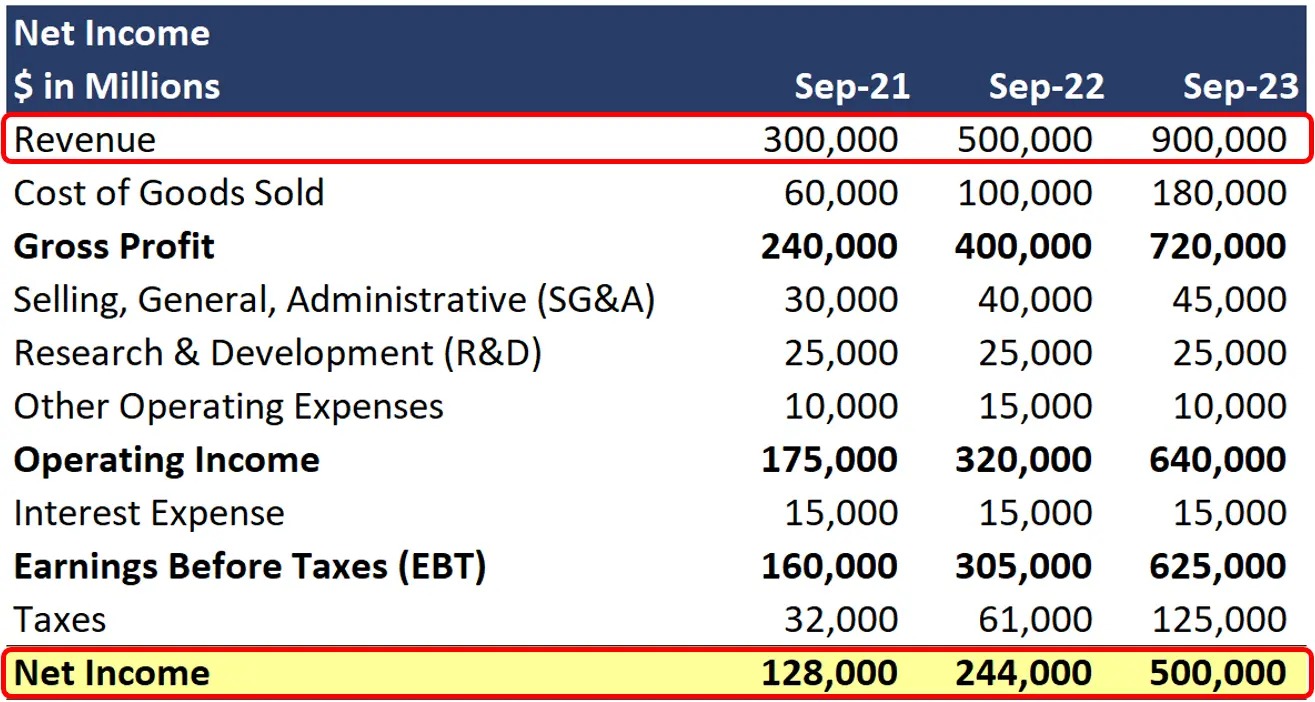

Finance
How To Buy Psilocybin Stocks
Published: January 17, 2024
Discover how to invest in psilocybin stocks and profit from the growing finance sector. Learn the ins and outs of buying and trading in this lucrative market.
(Many of the links in this article redirect to a specific reviewed product. Your purchase of these products through affiliate links helps to generate commission for LiveWell, at no extra cost. Learn more)
Table of Contents
- Introduction
- Understanding Psilocybin Stocks
- Factors to Consider Before Investing in Psilocybin Stocks
- Researching Psilocybin Companies
- Evaluating Financial Health and Performance
- Assessing Regulatory and Legal Challenges
- Analyzing Market Trends and Potential Growth
- Determining Risk and Return Potential
- Choosing a Psilocybin Stock to Invest In
- Strategies for Buying Psilocybin Stocks
- Conclusion
Introduction
Psilocybin stocks have gained significant attention in recent years as the demand for alternative mental health treatments has grown. Psilocybin, the active ingredient in “magic mushrooms,” has shown promising results in treating various mental health conditions, including depression, anxiety, and PTSD. As the legal and regulatory landscape surrounding psychedelic medicine continues to evolve, investing in psilocybin stocks presents an opportunity to be part of a potentially lucrative market.
This article will guide you through the process of buying psilocybin stocks and provide important factors to consider before making an investment. Whether you are a seasoned investor or someone exploring new investment opportunities, understanding the nuances of the psilocybin market is crucial to make informed decisions.
Before we delve into the specifics, it is important to note that investing in psilocybin stocks comes with inherent risks. The psilocybin industry is still in its early stages and is subject to regulatory uncertainties. Additionally, market volatility and the potential for adverse legal developments can impact the performance of these stocks. Therefore, it is essential to conduct thorough research and carefully assess the risk factors before making any investment decisions.
That being said, investing in psilocybin stocks can be a high-growth opportunity for those who are willing to navigate the complexities of this emerging market. The following sections will provide you with the tools and knowledge necessary to understand the industry, evaluate companies, analyze market trends, and ultimately make informed investment choices.
Understanding Psilocybin Stocks
Psilocybin stocks refer to publicly-traded companies that are involved in the research, development, production, and distribution of psilocybin-based products or psychedelics. These stocks offer investors the opportunity to participate in the rapidly expanding field of psychedelic medicine.
Psilocybin, also known as “magic mushrooms,” is a naturally occurring psychedelic compound found in certain species of mushrooms. It has been used for centuries in various cultures for spiritual and therapeutic purposes. Recent scientific studies have shown promising results in using psilocybin-assisted therapy to treat mental health conditions.
The psychedelics industry, including psilocybin stocks, is part of the larger movement towards alternative treatments for mental health. Growing dissatisfaction with conventional pharmaceutical approaches has led to increased interest in exploring the potential therapeutic benefits of psychedelics.
Investing in psilocybin stocks allows investors to support the development of innovative treatments while potentially profiting from the growth of this emerging market. However, it is crucial to understand the regulatory and legal complexities surrounding the production and sale of psychedelics.
Currently, psilocybin is classified as a Schedule I controlled substance in many countries, including the United States. This classification makes it illegal to possess, distribute, or use psilocybin for any purpose. However, there have been significant developments in recent years that indicate a shift in attitudes towards psychedelic medicine.
Several jurisdictions have decriminalized or reduced penalties for psilocybin possession and use, and some have even legalized it for medical or therapeutic purposes. This evolving legal landscape creates both opportunities and challenges for investors in the psilocybin industry.
Understanding the potential risks and rewards of investing in psilocybin stocks requires a comprehensive analysis of market trends, regulatory changes, and the financial health of individual companies. The next sections will explore various factors that investors should consider before making investment decisions in the psilocybin industry.
Factors to Consider Before Investing in Psilocybin Stocks
Investing in psilocybin stocks can be a complex and high-risk endeavor. Before diving into this emerging market, it is crucial to consider several key factors that can affect investment decisions:
- Legal and Regulatory Environment: The legal status of psilocybin can vary significantly from one jurisdiction to another. Research the laws and regulations surrounding psilocybin in the countries or states where the company operates. Stay updated on any potential changes in legislation that may impact the industry.
- Research and Development (R&D): Evaluate the company’s investment in research and development. Look for evidence of clinical trials, partnerships with institutions, and ongoing studies to assess the potential of the company’s product pipeline.
- Management and Team: Examine the experience and expertise of the management team. Look for leaders with a strong track record in the industry or related fields. A capable team can greatly influence the success of the company and its ability to navigate regulatory challenges.
- Financial Performance: Analyze the company’s financial statements, including revenue, expenses, and cash flow. Look for consistent revenue growth and careful management of expenses. Also, consider the company’s ability to fund its operations and future growth without excessive reliance on external financing.
- Competitive Landscape: Assess the competitive landscape and identify key competitors in the psilocybin space. Consider factors such as market share, product differentiation, and barriers to entry. A strong competitive position can be a key indicator of future success.
- Risk Assessment: Understand the risks associated with investing in the psilocybin industry. Evaluate the potential impact of regulatory changes, market volatility, and intellectual property risks. Conduct a thorough risk analysis and determine your risk tolerance before making any investment decisions.
It is important to note that this list is not exhaustive, and additional factors specific to each company should be taken into consideration. Conducting thorough due diligence and consulting with financial advisors can help you make informed decisions in this emerging market.
Remember, investing in psilocybin stocks carries inherent risks, and it is crucial to only invest what you can afford to lose. The next sections will delve deeper into researching psilocybin companies and evaluating their financial health and performance.
Researching Psilocybin Companies
When considering investing in psilocybin stocks, thorough research on the companies operating in the industry is essential. Here are some key steps you can take to research psilocybin companies:
- Industry Analysis: Gain a comprehensive understanding of the psilocybin industry as a whole. Research the current market size, potential growth prospects, and emerging trends. This analysis will help you identify the companies that are well-positioned to capitalize on the market opportunities.
- Company Profiles: Research individual psilocybin companies and review their profiles. Look for information such as the company’s history, mission, core products or services, and key competitors. Familiarize yourself with their strategic direction and growth plans.
- News and Media Coverage: Stay up-to-date with the latest news and media coverage related to psilocybin companies. Monitor industry publications, financial news outlets, and social media platforms for any significant updates, product advancements, or major partnerships that may impact the company’s prospects.
- Corporate Documents: Review the company’s corporate documents, including annual reports, SEC filings, and investor presentations. These resources can provide valuable insights into the company’s financial performance, business strategy, and future outlook.
- Partnerships and Collaborations: Investigate if the company has formed strategic partnerships or collaborations with research institutions, healthcare organizations, or other companies in the field. Such alliances can enhance the company’s credibility and may indicate a stronger position in the industry.
- Management Team: Assess the credibility and expertise of the company’s management team. Look for executives with relevant experience in the pharmaceutical, biotech, or healthcare sectors. Their track record and leadership abilities can greatly influence the company’s success.
- Research and Development Pipeline: Evaluate the company’s research and development pipeline. Investigate if the company is actively engaged in clinical trials or if it has proprietary formulations and patents. This information can give you insights into their product pipeline and potential revenue streams.
Remember to evaluate each company based on its unique characteristics and competitive advantages. Look for companies that demonstrate a commitment to innovation, research, and development.
Furthermore, consider the company’s overall reputation within the industry. Positive reviews, endorsements from healthcare professionals, and consumer feedback can indicate the company’s potential for long-term success.
By conducting thorough research on psilocybin companies, you can gain valuable insights into their business strategies, prospects, and potential risks. The next section will focus on evaluating the financial health and performance of psilocybin companies to make informed investment decisions.
Evaluating Financial Health and Performance
When investing in psilocybin stocks, it is crucial to evaluate the financial health and performance of the companies you are considering. Here are some key factors to consider:
- Revenue Growth: Examine the company’s historical revenue growth to assess its ability to generate income. Look for consistent revenue growth over time, indicating a strong demand for their products or services.
- Profitability and Margins: Analyze the company’s profitability metrics, such as gross profit margin, operating profit margin, and net profit margin. Healthy margins indicate efficient cost management and the potential for sustainable profitability.
- Balance Sheet Analysis: Review the company’s balance sheet to assess its financial stability. Look at key indicators such as total assets, total liabilities, and shareholder’s equity. A strong balance sheet with a favorable debt-to-equity ratio indicates a healthier financial position.
- Cash Flow: Evaluate the company’s cash flow to understand its ability to fund operations and investments. Analyze the cash flow from operations, investing activities, and financing activities. Positive and consistent cash flow is a positive sign, while negative cash flow raises concerns about liquidity.
- Debt Levels: Assess the company’s debt levels and its ability to service its debt obligations. Look at the company’s debt-to-equity ratio and interest coverage ratio. Lower debt levels and strong interest coverage ratios signify a lower risk of default and financial strain.
- Research and Development (R&D) Investment: Investigate the company’s investments in research and development. Companies that allocate significant resources to R&D demonstrate a commitment to innovation and the potential for future growth.
- Competitor Analysis: Compare the financial performance of the company with its competitors. Look at metrics such as revenue growth, profitability, and market share. A company that outperforms its peers indicates a competitive advantage.
It is important to note that financial analysis should be done in conjunction with qualitative factors such as industry trends, market conditions, and company strategies.
Moreover, consider any potential risks that may impact the company’s financial health, such as regulatory changes or legal challenges. Assessing the overall risk profile of the company is crucial before making investment decisions.
While analyzing financial metrics is essential, it is equally important to understand the context behind the numbers. Evaluate the company’s financial health in relation to its growth prospects and the overall market conditions.
By evaluating the financial health and performance of psilocybin companies, you can gain valuable insights into their stability, growth potential, and the overall risk-return profile of your investment. The next section will focus on assessing regulatory and legal challenges associated with investing in psilocybin stocks.
Assessing Regulatory and Legal Challenges
Investing in psilocybin stocks requires careful consideration of the regulatory and legal challenges that the industry faces. As psychedelics are still classified as controlled substances in many jurisdictions, navigating the legal landscape is crucial. Here are some key points to consider:
- Legal Status: Understand the legal status of psilocybin in the countries or states where the company operates. Research the laws surrounding possession, production, distribution, and use of psilocybin. Stay updated on any changes in legislation that may impact the industry.
- Regulatory Developments: Monitor regulatory developments and changes in government policy regarding psychedelics. Be aware of any potential regulatory hurdles or restrictions that could impact the production, research, or distribution of psilocybin-based products.
- Clinical Trials and Approvals: Evaluate the company’s progress in conducting clinical trials and obtaining approvals from regulatory agencies. Companies that have advanced in the regulatory approval process are more likely to gain a competitive advantage and capitalize on future market opportunities.
- International Expansion: If the company has plans for international expansion, consider the regulatory frameworks in the target countries. Different jurisdictions may have varying levels of acceptance or restrictions on psilocybin-based treatments.
- Risk of Enforcement Actions: Assess the risk of enforcement actions, such as legal proceedings or regulatory penalties, that the company may face due to non-compliance or changes in enforcement priorities.
- Intellectual Property Protection: Examine the company’s intellectual property portfolio. Patents and trademarks can provide a competitive advantage and protection against infringement. Evaluate the strength and breadth of the company’s intellectual property rights.
- Government Support: Research government initiatives and support for psychedelic research and therapy. Government endorsements and partnerships can provide an indication of a more favorable regulatory environment.
It is important to note that the regulatory landscape is evolving rapidly, and changes in laws and regulations can significantly impact the industry. Legalization efforts, decriminalization measures, or advancements in research can create both opportunities and risks for investors.
When assessing regulatory and legal challenges, it is advisable to consult with legal experts who specialize in the psilocybin industry. They can provide insights into the current regulatory environment and help navigate potential legal complexities.
Stay informed about the regulatory landscape and adapt your investment strategy accordingly. By carefully assessing regulatory and legal challenges, you can make more informed decisions when investing in psilocybin stocks.
Analyzing Market Trends and Potential Growth
To make informed investment decisions in the psilocybin industry, it is crucial to analyze market trends and assess the potential for growth. Understanding the market dynamics will help you identify opportunities and evaluate the long-term prospects of psilocybin stocks. Here are some factors to consider:
- Market Size and Potential: Determine the current market size for psychedelic medicine and projected growth rates. Evaluate the potential demand for psilocybin-based therapies and assess the addressable market size. Consider factors such as the prevalence of mental health conditions and the growing acceptance of alternative treatments.
- Competitive Landscape: Analyze the competitive landscape and identify key players in the psilocybin industry. Assess their market share, product offerings, and competitive advantages. Understanding the competitive dynamics will help you gauge the company’s position within the market.
- Consumer Perception: Explore public attitudes towards psychedelic medicine and the acceptance of psilocybin-based treatments. Monitor trends in public opinion, media coverage, and patient testimonials. Positive perceptions can drive the adoption of psychedelic therapies and fuel market growth.
- Research and Development: Stay updated on the latest advancements in psychedelic research and development. Look for breakthroughs in studies, clinical trials, and academic research. Groundbreaking research can bolster market potential and open new avenues for growth.
- Partnerships and Investments: Monitor partnerships, investments, and acquisitions within the psilocybin industry. Strategic collaborations with established healthcare companies, research institutions, or pharmaceutical manufacturers can indicate growth potential and market validation.
- Legislative Developments: Pay attention to legislative developments and policy changes related to psilocybin. Monitor the progress of legalization efforts, decriminalization measures, and government support for psychedelic research. Positive legislative changes can fuel market growth and expansion.
- International Markets: Assess the potential for international expansion and the uptake of psychedelic therapies in different regions. Evaluate the regulatory frameworks and cultural acceptance of psilocybin in target markets. Consider the long-term growth possibilities beyond the domestic market.
By analyzing market trends and potential growth, you can identify emerging opportunities and assess the long-term viability of investing in psilocybin stocks. Keep in mind that the psychedelic industry is still in its early stages, and market dynamics can quickly evolve.
It’s important to gather and evaluate both quantitative and qualitative data to form a comprehensive understanding of market trends and growth potential. This analysis will help inform your investment decisions and enable you to navigate the evolving landscape of the psilocybin industry.
Determining Risk and Return Potential
Assessing the risk and return potential is a critical step in making investment decisions, particularly in the psilocybin industry. Here are some factors to consider when determining the risk and return potential of investing in psilocybin stocks:
- Regulatory and Legal Risks: Evaluate the legal and regulatory challenges associated with psilocybin. Consider the potential impact of changes in legislation, enforcement actions, and evolving regulatory frameworks. Understand the level of risk the company faces and the potential consequences on its operations and growth prospects.
- Market Volatility: Recognize that investing in emerging industries, such as psilocybin, can be highly volatile. Assess the potential for price fluctuations and market uncertainties that may affect the value of the stock. Higher volatility can present both opportunities and risks for investors.
- Company-Specific Risks: Identify the company-specific risks that may impact its performance and growth potential. Evaluate factors such as financial stability, competitive position, intellectual property protection, and management capabilities. Consider any potential risks that are unique to the company and its operations.
- Growth Potential: Analyze the growth potential of the company and the industry as a whole. Assess factors such as market size, demand for psilocybin-based therapies, and the company’s ability to capture a significant share of the market. Higher growth potential typically comes with higher levels of risk.
- Financial Performance: Evaluate the historical financial performance of the company. Consider factors such as revenue growth, profitability, and cash flow generation. A track record of strong financial performance can indicate a lower level of risk and higher return potential.
- Market Position: Assess the company’s competitive position within the psilocybin industry. Consider factors such as market share, product differentiation, and barriers to entry. A strong market position can indicate a lower level of risk and higher return potential.
- Risk Tolerance: Determine your own risk tolerance as an investor. Understand your ability to withstand potential losses and fluctuations in the market. Consider how investing in a volatile and emerging industry like psilocybin aligns with your overall investment strategy and risk profile.
It’s important to remember that investing in psilocybin stocks comes with inherent risks. The psilocybin industry is still in its early stages, and market volatility, regulatory uncertainties, and legal challenges can impact the performance of these stocks.
Additionally, potential returns in the psilocybin industry can vary significantly depending on market conditions, company-specific factors, and the overall growth of the industry. Investors should carefully evaluate the risk and return potential to make informed decisions.
Consulting with financial advisors and conducting comprehensive research can help you assess the risk and return potential of investing in psilocybin stocks. By understanding and managing the risks, you can position yourself for potential returns in this emerging market.
Choosing a Psilocybin Stock to Invest In
Choosing the right psilocybin stock to invest in requires careful consideration of various factors. Here are some key points to help you make an informed investment decision:
- Thorough Research: Conduct thorough research on different psilocybin companies and familiarize yourself with their backgrounds, products or services, financial performance, and growth potential. This research will help you narrow down your options and identify companies that align with your investment goals.
- Financial Health: Evaluate the financial health of the companies you are considering. Review their financial statements, revenue growth, profitability, debt levels, and cash flow. Focus on companies that demonstrate strong financial stability and a track record of sustainable growth.
- Market Position: Assess the competitive landscape and the company’s position within it. Consider factors such as market share, product differentiation, and intellectual property protection. Look for companies with a competitive advantage and the potential to capture a significant share of the growing psilocybin market.
- Management Team: Evaluate the experience and expertise of the company’s management team. Look for leaders with a strong background in the industry or related fields. A capable management team can navigate through regulatory challenges and execute growth strategies effectively.
- Research and Development: Consider the company’s investment in research and development (R&D). Look for evidence of ongoing clinical trials, partnerships with research institutions, and intellectual property rights. Companies with a robust R&D pipeline may have a higher potential for future growth and innovation.
- Regulatory Compliance: Assess the company’s compliance with regulatory requirements. Investigate any past legal issues or regulatory violations. Companies that prioritize compliance and have a clear understanding of the evolving regulatory landscape may have a lower risk profile.
- Risk-Return Profile: Evaluate the company’s risk-return profile based on the factors mentioned above. Consider your own risk tolerance and investment objectives. Seek a balance between potential returns and the level of risk you are comfortable with.
- Diversification: Consider diversifying your portfolio by investing in multiple psilocybin stocks. This strategy can help mitigate the risk of downside exposure to an individual company and provide broader exposure to the potential growth of the industry.
- Seek Professional Advice: Consult with financial advisors or experts with knowledge of the psilocybin industry. They can provide insights and guidance tailored to your investment goals and risk tolerance.
It is important to note that investing in psilocybin stocks carries inherent risks. The industry is still developing, and regulatory uncertainties can impact the performance of these stocks. Thorough due diligence and careful analysis are crucial before making any investment decisions.
By considering the factors mentioned above and seeking professional guidance, you can increase your chances of choosing a psilocybin stock that aligns with your investment objectives and risk appetite.
Strategies for Buying Psilocybin Stocks
When buying psilocybin stocks, it is important to have a clear strategy in place to optimize your investment decisions. Here are some strategies to consider:
- Long-Term Investing: Take a long-term investing approach by identifying companies with strong growth potential and holding the stocks for an extended period. The psilocybin industry is still in its early stages, and long-term investing allows you to potentially benefit from the industry’s growth over time.
- Dollar-Cost Averaging: Implement a dollar-cost averaging strategy by investing a fixed amount of money regularly over a specific time period. This approach reduces the impact of market volatility and allows you to accumulate shares at different price points.
- Value Investing: Adopt a value investing strategy by looking for psilocybin stocks that are undervalued or trading below their intrinsic value. Conduct thorough fundamental analysis to identify companies with strong financials and growth prospects that the market may have overlooked.
- Market Timing: Consider market timing strategies by closely monitoring market trends and identifying potential entry or exit points. However, be mindful that timing the market involves inherent risks and requires careful analysis of market conditions.
- Portfolio Diversification: Diversify your portfolio by investing in a variety of psilocybin stocks. This spreads the risk across multiple companies and reduces the impact of individual stock performance on your overall portfolio. Consider diversifying across different segments of the psilocybin industry, such as research companies, treatment providers, or drug developers.
- Staying Informed: Stay up-to-date with the latest news, industry developments, and research findings related to psilocybin. This information can help you make informed investment decisions and identify potential opportunities or risks in the market.
- Risk Management: Set clear risk management strategies to protect your investments. Establish stop-loss orders or trailing stop orders to limit potential losses. Regularly review and reassess your investment thesis to ensure it aligns with your risk tolerance and financial goals.
- Monitor Regulatory Changes: Stay informed about any changes in the regulatory landscape regarding the use, production, and distribution of psilocybin. Changes in legislation can significantly impact the market and individual companies, so it is essential to adapt your strategy accordingly.
Remember, strategies should be tailored to your own risk tolerance, investment horizon, and financial goals. It is always advisable to do thorough research, seek professional advice, and regularly review your investment strategy to optimize your results.
Investing in psilocybin stocks carries inherent risks, and past performance is not indicative of future results. Be prepared for market volatility and potential fluctuations in stock prices. By adhering to a well-defined investment strategy, you can navigate the evolving landscape of the psilocybin industry more effectively.
Conclusion
Investing in psilocybin stocks can present both opportunities and challenges in an industry that is rapidly evolving. Before diving into this emerging market, it is crucial to thoroughly research and understand the factors that can impact your investment decisions.
Throughout this article, we have explored the key aspects of investing in psilocybin stocks, from understanding the industry and evaluating companies to assessing regulatory challenges and market trends. By considering factors such as legal and regulatory landscapes, financial health and performance, and growth potential, you can make informed choices that align with your investment goals and risk tolerance.
Moreover, it is essential to have a clear investment strategy in place, whether it’s long-term investing, value investing, or diversification. Staying informed about market trends, monitoring regulatory changes, and managing risks are integral to successful investing in the psilocybin industry.
However, it is important to acknowledge that investing in psilocybin stocks carries inherent risks. The industry is still in its early stages, and market volatility, regulatory uncertainties, and legal challenges can impact stock performance. It is crucial to consider these risks and conduct thorough research before making any investment decisions.
Finally, consult with financial advisors or experts who specialize in the psilocybin industry to gain additional insights tailored to your unique investment situation. They can provide guidance and help navigate the complexities of this emerging market.
Remember, investing involves risk, and past performance is not indicative of future results. Only invest what you can afford to lose and regularly review your investment thesis to ensure it aligns with your financial goals.
With thorough research, careful analysis, and a well-defined strategy, investing in psilocybin stocks can be a worthwhile opportunity to be part of the evolving field of psychedelic medicine and potentially benefit from its growth.














